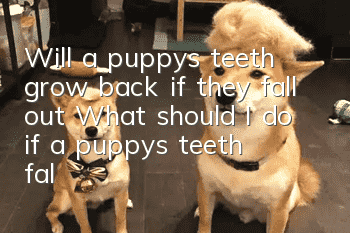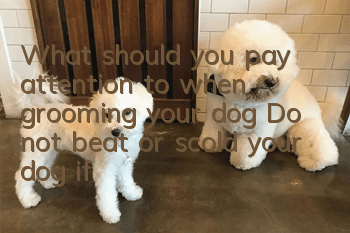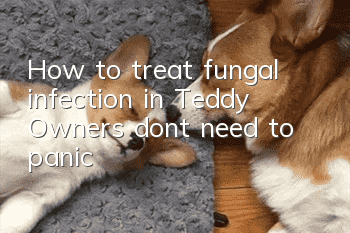Will a puppy’s teeth grow back if they fall out? What should I do if a puppy’s teeth fall out?

Puppy’s teeth fall out in the following situations:
1. Dog teeth replacement starts at 4 months of age, and permanent teeth are replaced at 6 months of age. After 8 months of age, all teeth are replaced with permanent teeth. The permanent teeth of a 1-year-old puppy are all long, white and shiny, and there are sharp protrusions on the incisors. It is normal for dogs under 6 months old to lose teeth, and they will all be replaced and grow back quickly. 2. If the puppy has reached adulthood (8-12 months), the growth period of the teeth is fixed. If the teeth fall out, they will not grow back on their own. The owner should take good care of it in the future. 3. If animals can have their teeth filled, you can go to a larger hospital for consultation. After filling the teeth, you should give the puppy less bones.What should I do if my puppy loses his teeth?
Young dogs start to grow teeth around 20 days old. They will gradually change their teeth around 2-3 months old. This process may last until 6 years old. -Around 8 months old. During this period, the dog’s teeth will slowly grow back if they fall out. Of course, if you want to ensure that the pet dog can successfully replace its teeth during this period, the nutritional supply must be comprehensive and sufficient. Especially calcium nutrition, which plays a very important role in the process of dog teeth replacement. If there is a lack of calcium, deciduous teeth will not fall out easily and new teeth will grow slowly. Of course, too much calcium nutrition is not good either. To ensure that the dog's teeth change smoothly and that double rows of teeth are not grown, reasonable calcium supplementation is particularly important. In addition, when the pet dog reaches adulthood, if its teeth fall out due to special reasons, the dog will not grow teeth in the future. If you want your dog to have straight teeth, you need to fill your dog's teeth.
How to care for puppy teeth
Dogs don’t care much about their own teeth, but they can improve their dental problems by letting them chew on the right products. Long chews can help sweep away plaque and dirt, and most dogs are happy to do so. Naturally they will choose to include rawhide or cartilage. Don't give your dog anything difficult, such as hooves or beef bones, or ribs, as these bones can break your dog's teeth.Most dogs don’t bite, which is a result of natural selection, but most dogs like to chew on artificial bones or toys. Try a variety of products to see what your dog likes. Finally, choose toys with a rough or large rough surface, such as rubber or nylon, so that your dog does not pose a choking hazard.
But for the sake of the dog’s dental health, we also need to do dental beauty for the dog at a certain time, such as the simplest brushing.
Tools needed for dog brushing
1. Puppy toothbrush: Choose a soft toothbrush that matches the size of the mouth. Because dogs have complex tooth structures and need to be flexible when brushing, a smaller toothbrush is more suitable for dogs. 2. Dog toothpaste: Do not use the toothpaste we usually use, because dogs will not spit out toothpaste bubbles like us, so you need to prepare a safe toothpaste for them to swallow. Human toothpaste contains abrasives and detergents, which can have adverse effects on your dog's health. Choose poultryOr seafood-flavored toothpaste, which dogs usually prefer. 3. Paper towel or pad: If you don’t have time to brush your dog’s teeth, you can wipe his teeth and gum line to remove some bacteria and food. You can use a canine dental pad, or a simple gauze wrapped around your finger. These things can be purchased at pet stores. Random articles
- Dog training techniques that owners must master
- What are the common diseases of dogs? Do you know the dangers of these five diseases?
- Can dental cleaning sticks replace brushing? You don’t want to be dizzy when a dog licks your face?
- Is it necessary to use anesthesia to clean a dog’s teeth? Is there any risk in using anesthesia for a dog?
- How to change dog food for dogs? How to transition dog food to dogs
- What are the benefits of feeding dogs dog food? Pet experts analyze the benefits of feeding dog food
- What are the dog physical examination items? Understand the dog physical examination process
- Diseases that Teddy is prone to: Scientific feeding will prevent you from getting sick
- What's going on if the dog doesn't eat?
- How to feed your dog properly and choose the best dog food according to the season



